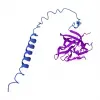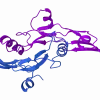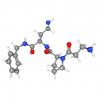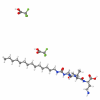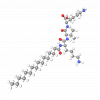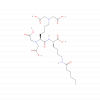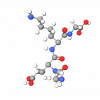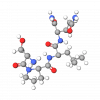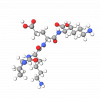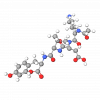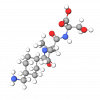Besides lactation, human Prolactin is a hormone that regulates hair follicle cycles, angiogenesis, keratinocyte proliferation, and the activity of epithelial stem cells.
Peptides
There are numerous examples in physiology of peptide regulatory elements that play integral roles in basic homeostatic mechanisms such as injury-repair responses and other stimulus-response actions. Among these are well-known neuropeptides (e.g., bradykinins, endorphins); metabolism and fat storage regulators (e.g., neuropeptide Y, leptin, insulin); tanning and skin pigmentation-related peptides (e.g., α-MSH, ACTH, Agouti), and peptides involved in wound healing (e.g., FGF).
This large group of innovative cosmeceutical ingredients triumphed in the world of skincare products during the last two decades. Peptides are chains of amino acids that are attached in a specific order. Amino acids are naturally occurring in the body and are vital to everyday living processes. Peptides can be made up of 2 or more amino acids that can stimulate different responses within the body. As a result, peptides serve as tiny messengers that can be sent to kick the skin into gear and make it look better.
Peptides are leading a beauty revolution due to their excellent multi-functional properties; formularies are scrambling to access the latest advances in cosmetic peptide technology. In addition, their "Botox-like" performance, activation of collagen and elastin production, and skin-lightening effect make them very efficient against coarse wrinkles and hyperpigmentation of the skin.
sh-Polypeptide-3 (former rh-Oligopeptide-5) is a single-chain synthetic recombinant peptide, an analog of human KGF (Keratinocyte Growth Factor). KGF was first described in 1989 as a human growth factor that stimulated epithelial cell proliferation.
sh-Polypeptide-31 is a synthetic recombinant peptide that mimics human Insulin-like Growth Factor-2 (IGF-2). The old designation was rh-Polypeptide-31 (rh- prefix means recombinant human).
sh-Polypeptide-4 is a synthetic analog of human SCF (Stem cell factor), a peptide of 164 amino acids. It is a cytokine that controls the survival, growth, and differentiation of hematopoietic stem cells.
sh-Polypeptide-40 is a synthetic recombinant human placental lactogen (hPL) hormone analog peptide composed of 192 amino acids. hPL is also known as human chorionic somatomammotropin (hCS) or human chorionic somatotropin.
sh-Polypeptide-5 is a synthetic recombinant peptide, an analog of human TGFβ3 (Transforming Growth Factor β3). It regulates the proliferation, growth, and differentiation of skin cells as a potent, multifunctional cytokine, and helps keep the skin young by converting old cells into new ones.
sh-Polypeptide-50 is a single-chain synthetic recombinant peptide that repeats a part of the amino acid sequence of Tropoelastin, a protein produced inside fibroblasts.
sh-Polypeptide-6 is a synthetic recombinant single-chain peptide, an analog of human Interleukin 10 (IL-10). Interleukin 10 is an anti-inflammatory cytokine that regulates the immune response and antibody production.
sh-Polypeptide-62 is a synthetic recombinant peptide, an analog of human Hepatocyte Growth Factor (HGF). It stimulates keratin production, hair growth, and hair pigmentation, and accelerates wound healing and skin regeneration.
sh-Polypeptide-64 is a synthetic recombinant peptide derived from the human Aquaporin-1 (AQP-1) protein that promotes the transport of water across biological membranes.
sh-Polypeptide-7 is a synthetic recombinant analog of human growth hormone (hGH), also called Somatotropin. It repeats the amino acid sequences of hGH and mimics its action, stimulating the growth, reproduction, and regeneration of skin cells.
sh-Polypeptide-71 (former sh-Polypeptide-65) is a synthetic recombinant human vasoactive intestinal peptide or VIP composed of 28 amino acids. This biologically active peptide controls vasodilatation in skin tissue, soothes inflammation, and improves angiogenesis.
sh-Polypeptide-8 is a synthetic single-chain recombinant analog of human PDGF (Platelet-Derived Growth Factor) that is involved in normal skin growth, healing, and wound repair. rh-PDGF mimics the biological activity of the endogenous protein and is the active ingredient in several FDA-appro
sh-Polypeptide-9 is a synthetic recombinant analog of human VEGFA (Vascular Endothelial Growth Factor A). It enhances cell division and migration by increasing the permeability of capillary vessels to serum proteins.
sh-Polypeptide-93 is a synthetic recombinant human connective tissue growth factor (CTGF) analog peptide composed of 324 amino acids. It mimics the Insulin-like Growth Factor (IGF)-binding domain of CTGF and regulates the expression of genes responsible for collagen production in fibroblasts.
Shield Bact is a Cationic Host Defense Peptide (CHDP), a hexapeptide with antimicrobial action. It exhibits a broad spectrum of rapid bactericidal activity with a low propensity for resistance development.
Several factors are involved in skin aging, such as molecular mechanisms related to collagen and elastin proteins degradation, and lipid content in the skin. It has been clearly demonstrated that these factors can be minimized by decreasing facial muscle contraction.
sr-(Wasp Spider Polypeptide-1 Oligopeptide-178) is a single-chain recombinant polypeptide that repeats a part of spider silk protein. It is a white soft powder, a product of fermentation using gene-modified yeast in a nutrient-rich medium.
Syn®-Coll (Palmitoyl Tripeptide-5) is a patented lipo-tripeptide-based complex based on many years of experience synthesizing peptides for the pharmaceutical industry. It is a small peptide with a unique sequence Lys-Val-Lys to mimic the human body's mechanism to produce collagen via TGF-β.
Tetracarboxymethyl Hexanoyl Dipeptide-12 is a synthetic peptide derivative that enhances the expression of genes responsible for adiponectin production while inducing dermal cells' protective autophagy. It is also known under the trade name AdipoSOL™ 2000.
Tetrapeptide-21 (GEKG-peptide) is a synthetic peptide that repeats a part of a sequence (Gly-Glu-Lys-Gly) of several extracellular matrix (ECM) proteins such as collagens I, II, III, IV, V, elastin, and pro-elastin.
Our skin has an essential regulatory function, which activity depends on the circadian rhythm. It activates cellular defense processes in the skin during daylight and deactivates during night.
Tetrapeptide-30 is a synthetic peptide PKEK (sequence: Pro-Lys-Glu-Lys) that contains a KEK (Lys-Glu-Lys) motif found in antimicrobial polypeptide cathelicidin which can reduce post-inflammatory or UV-induced hyperpigmentation.
Tetrapeptide-53 is a synthetic peptide with sequence Ile-Tyr-Phe-Tyr and hair-growth-promoting activity. It is known under the trade name CG-Hairstin.
TIMP Peptide is an aqueous solution of matrix metalloproteases inhibiting lipo-peptide designed to decelerate photoaging.
Tranexamoyl Dipeptide-22 is a synthetic tripeptide with sequence Txa-Val-Ser (Tranexamil-VS; TXA-VS) that exhibits skin whitening activity. It inhibits the activity of tyrosinase, one of the critical enzymes involved in melanin production.
